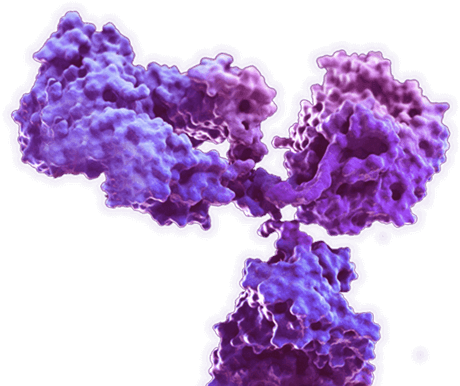AibGenesis™ Mouse Anti-ATG7 Antibody (CBMOAB-24522FYC)
Cat: CBMOAB-24522FYC

Certificate of Analysis Lookup
To download a Certificate of Analysis, please enter a lot number in the search box below. Note: Certificate of Analysis not available for kit components.
Lot Number
To download a Certificate of Analysis, please enter a lot number in the search box below. Note: Certificate of Analysis not available for kit components.
Lot Number
- Product List
- Specifications
- Application Information
- Target
- Reference
| Sub Cat | Clonality | Species Reactivity | Application | Clone | Conjugate | Size | |
| CBMOAB-24522FYC | Monoclonal | A. thaliana (Arabidopsis thaliana), C. elegans (Caenorhabditis elegans), Cattle (Bos taurus), Chimpanzee (Pan troglodytes), Fruit fly (Drosophila melanogaster), Maize (Zea mays), Pig (Sus scrofa), Rhesus (Macaca mulatta), Yeast | WB, ELISA | MO24522FC | 100 µg | ||
| CBMOAB-02010FYA | Monoclonal | Fruit fly (Drosophila melanogaster) | WB, ELISA | MO02010FYA | 100 µg | ||
| CBMOAB-36505FYA | Monoclonal | Rhesus (Macaca mulatta) | WB, ELISA | MO36505FYA | 100 µg | ||
| CBMOAB-00394CR | Monoclonal | Yeast | WB, ELISA | MO00394CR | 100 µg | ||
| CBMOAB-00756HCB | Monoclonal | C. elegans (Caenorhabditis elegans) | WB, ELISA | MO00756HB | 100 µg | ||
| MO-AB-10488W | Monoclonal | Chimpanzee (Pan troglodytes) | WB, ELISA | MO10488W | 100 µg | ||
| MO-AB-47422W | Monoclonal | Maize (Zea mays) | WB, ELISA | MO47422W | 100 µg | ||
| MO-AB-07758R | Monoclonal | Cattle (Bos taurus) | WB, ELISA | MO07758R | 100 µg | ||
| MO-AB-23919R | Monoclonal | Pig (Sus scrofa) | WB, ELISA | MO23919R | 100 µg | ||
| MO-DKB-0061RA | Polyclonal | A. thaliana (Arabidopsis thaliana) | WB | 50 µL |
Specifications
| Host species | Mouse (Mus musculus) |
| Species Reactivity | A. thaliana (Arabidopsis thaliana), C. elegans (Caenorhabditis elegans), Cattle (Bos taurus), Chimpanzee (Pan troglodytes), Fruit fly (Drosophila melanogaster), Maize (Zea mays), Pig (Sus scrofa), Rhesus (Macaca mulatta), Yeast |
| Clone | MO24522FC |
| Specificity | This antibody binds to Arabidopsis ATG7. |
| Format | Liquid or Lyophilized |
| Storage | Store at 4°C: short-term (1-2weeks) Store at -20°C: long-term and future use |
| Purity | > 90% was determined by SDS-PAGE |
| Purification | Purified with Protein A or G affinity chromatography |
| Cellular Localization | Other locations; Cytosol |
Application Information
| Application | WB, ELISA |
| Application Notes | ELISA: 1:1000-1:3000 Other applications are to be developed. The optimal dilution should be determined by the end user. |
Target
| Introduction | This gene encodes an E1-like activating enzyme that is essential for autophagy and cytoplasmic to vacuole transport. The encoded protein is also thought to modulate p53-dependent cell cycle pathways during prolonged metabolic stress. It has been associated with multiple functions, including axon membrane trafficking, axonal homeostasis, mitophagy, adipose differentiation, and hematopoietic stem cell maintenance. Alternative splicing results in multiple transcript variants. (From NCBI) |
| Product Overview | Mouse Anti-Arabidopsis ATG7 Antibody is a mouse antibody against ATG7. It can be used for ATG7 detection in Western Blot, Enzyme-Linked Immunosorbent Assay. |
| Alternative Names | Autophagy Related 7; Ubiquitin-Activating Enzyme E1-Like Protein; ATG12-Activating Enzyme E1 ATG7; APG7-LIKE; APG7L; HAGP7; ATG7 Autophagy Related 7 Homolog (S. Cerevisiae) |
| UniProt ID | Q94CD5 |
| Protein Refseq | The length of the protein is 697 amino acids long. The sequence is show below: MAEKETPAIILQFAPLNSSVDEGFWHSFSSLKLDKLGIDDSPISITGFYGPCGHPQVSNHLTLLSESLPLDEQSLIASTSHGNRNKCPVPGILYNTNTVESFNKLDKQSLLKAEANKIWEDIQSGKALEDPSVLPRFLVISFADLKKWSFRYWFAFPAFVLDPPVSLIELKPASEYFSSEEAESVSAACNDWRDSDLTTDVPFFLVSVSSDSKASIRHLKDLEACQGDHQKLLFGFYDPCHLPSNPGWPLRNYLALIRSRWNLETVWFFCYRESRGFADLNLSLVGQASITLSSGESAETVPNSVGWELNKGKRVPRSISLANSMDPTRLAVSAVDLNLKLMRWRALPSLNLNVLSSVKCLLLGAGTLGCQVARTLMGWGIRNITFVDYGKVAMSNPVRQSLYNFEDCLGRGEFKAVAAVKSLKQIFPAMETSGVVMAIPMPGHPISSQEEDSVLGDCKRLSELIESHDAVFLLTDTRESRWLPSLLCANANKIAINAALGFDSYMVMRHGAGPTSLSDDMQNLDINKTNTQRLGCYFCNDVVAPQDSMTDRTLDQQCTVTRPGLAPIAGALAVELLVGVLQHPLGINAKGDNSSLSNTGNNDDSPLGILPHQIRGSVSQFSQITLLGQASNSCTACSETVISEYRERGNSFILEAINHPTYLEDLTGLTELKKAANSFNLDWEDDDTDDDDVAVDL. |
Reference
| Reference | 1. Wang, P., Sun, X., Wang, N., Jia, X., & Ma, F. (2017). Ectopic expression of an autophagy-associated MdATG7b gene from apple alters growth and tolerance to nutrient stress in Arabidopsis thaliana. Plant Cell, Tissue and Organ Culture (PCTOC), 128, 9-23. 2. Thompson, A. R., Doelling, J. H., Suttangkakul, A., & Vierstra, R. D. (2005). Autophagic nutrient recycling in Arabidopsis directed by the ATG8 and ATG12 conjugation pathways. Plant physiology, 138(4), 2097-2110. |
See other products for " ATG7 "
| MO-DKB-0062RA | Rabbit Anti-ATG7 Antibody (MO-DKB-0062RA) |
For Research Use Only | Not For Clinical Use.
Online Inquiry

